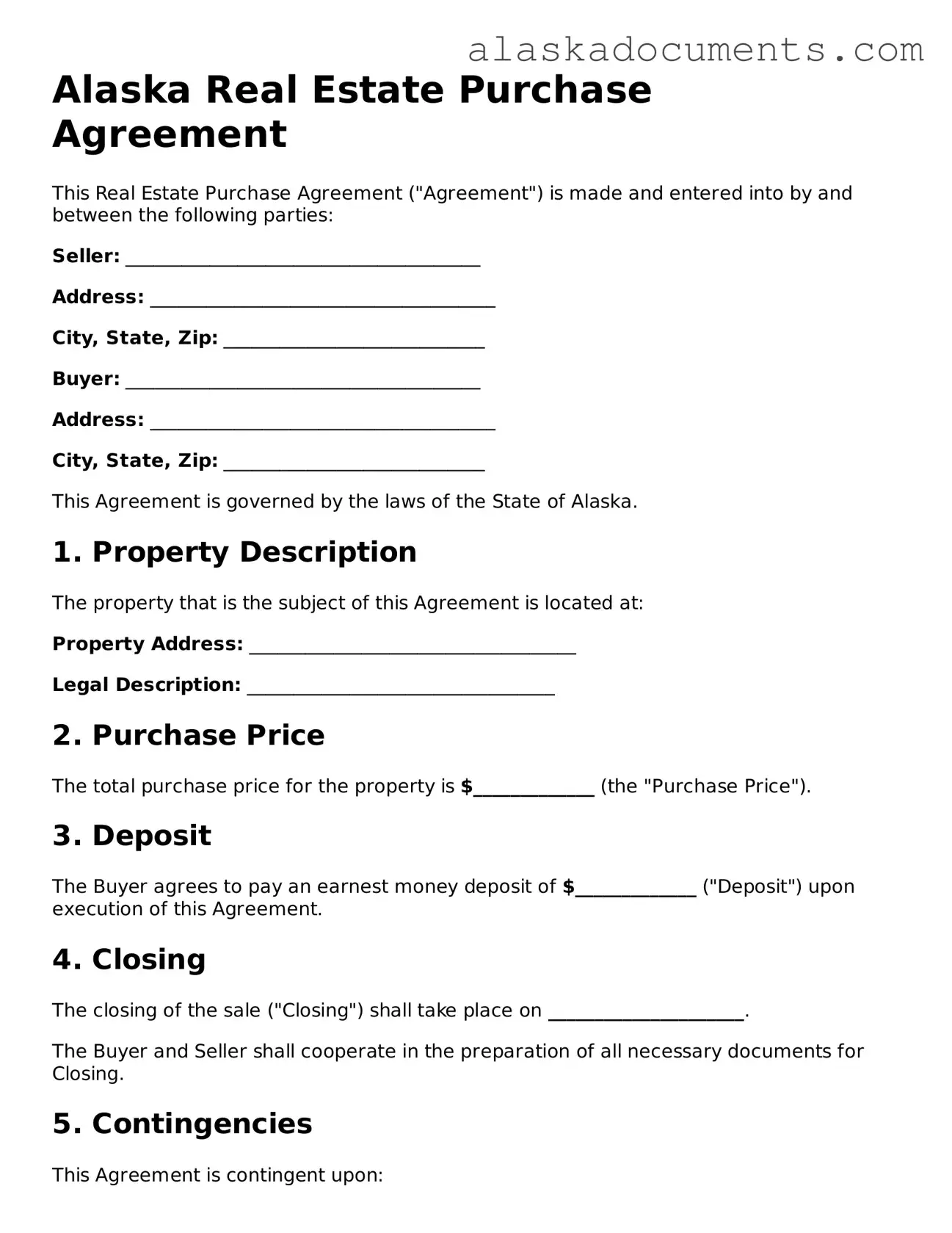Alaska Real Estate Purchase Agreement
This Real Estate Purchase Agreement ("Agreement") is made and entered into by and between the following parties:
Seller: ______________________________________
Address: _____________________________________
City, State, Zip: ____________________________
Buyer: ______________________________________
Address: _____________________________________
City, State, Zip: ____________________________
This Agreement is governed by the laws of the State of Alaska.
1. Property Description
The property that is the subject of this Agreement is located at:
Property Address: ___________________________________
Legal Description: _________________________________
2. Purchase Price
The total purchase price for the property is $_____________ (the "Purchase Price").
3. Deposit
The Buyer agrees to pay an earnest money deposit of $_____________ ("Deposit") upon execution of this Agreement.
4. Closing
The closing of the sale ("Closing") shall take place on _____________________.
The Buyer and Seller shall cooperate in the preparation of all necessary documents for Closing.
5. Contingencies
This Agreement is contingent upon:
- Financing: Buyer obtaining financing on terms acceptable to Buyer.
- Inspection: Satisfactory completion of a property inspection.
- Appraisal: Property appraising for at least the Purchase Price.
6. Disclosures
The Seller agrees to provide Buyer with any known material defects and disclosures regarding the property, in compliance with Alaska law.
7. Governing Law
This Agreement shall be construed in accordance with the laws of the State of Alaska.
8. Signatures
IN WITNESS WHEREOF, the parties hereto have executed this Agreement as of the date first above written.
Seller Signature: ___________________________
Date: ___________________________
Buyer Signature: ___________________________
Date: ___________________________
